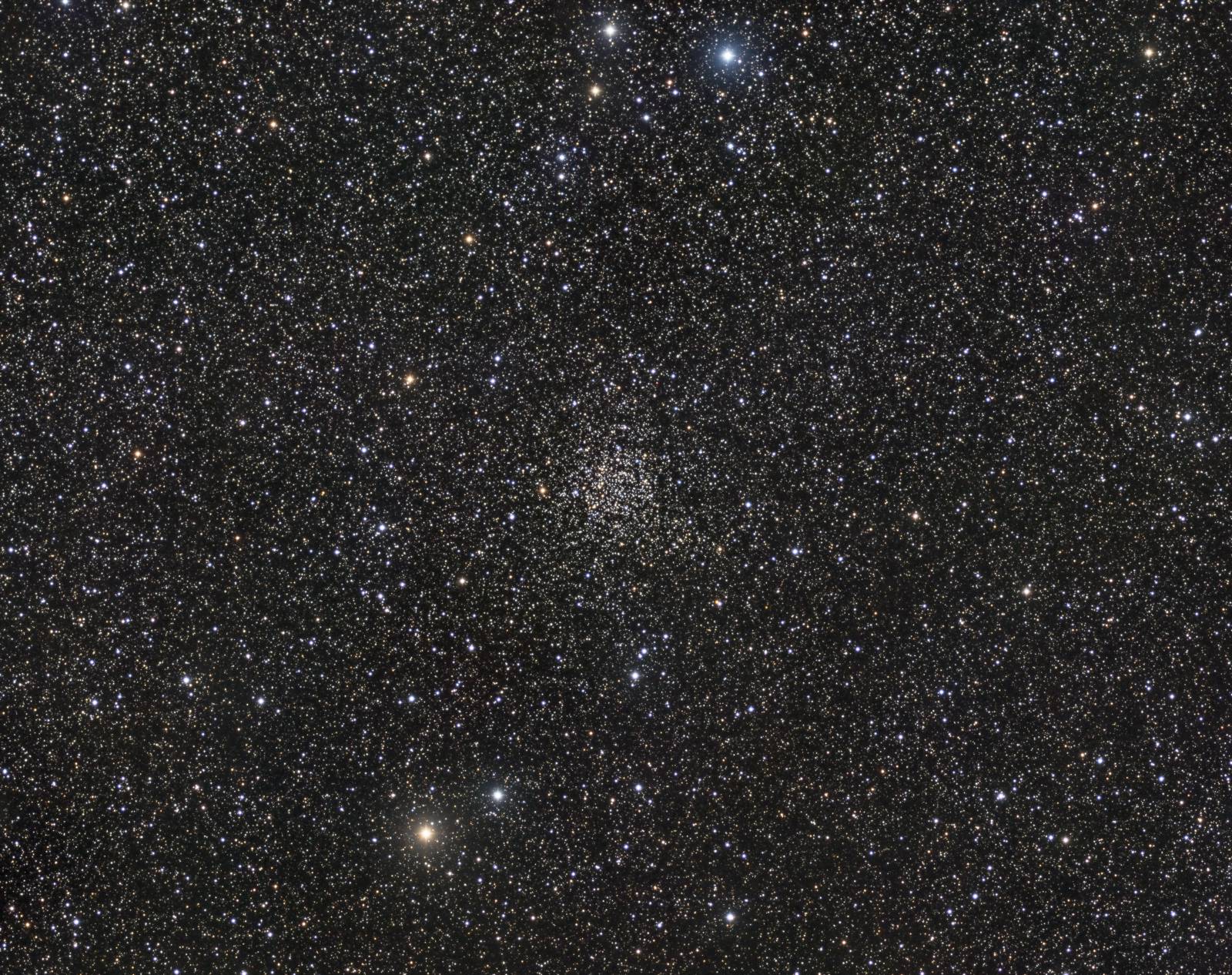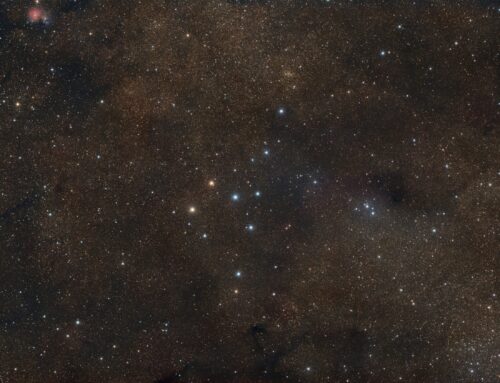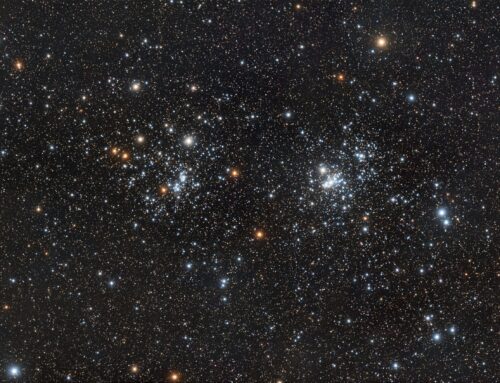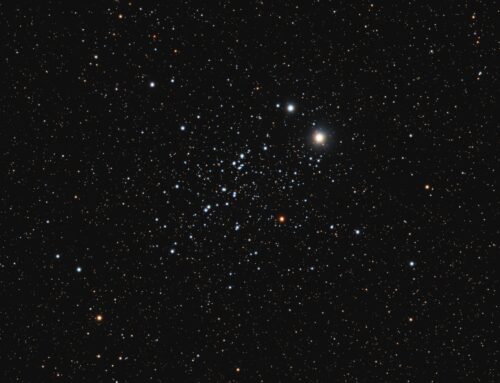NGC 7789, “Carolyn’s Rose Cluster” Wide Field
 Click image for full size version
Click image for full size version
August 28, 2017
This shot shows NGC 7789, which is, in my opinion, the finest of Cassiopeia’s many open clusters. After a whole summer of shooting mostly nebulae, both bright and faint, it was time to go after a pretty open cluster. I have shot this cluster at higher focal length previously, but it is nice to see it set in a nice, wide Milky Way field.
Carolyn Herschel discovered it, and it is sometimes called the White Rose Cluster or Carolyn’s Rose Cluster. It is about 8,000 light years away, and in our home galaxy, the Milky Way. It is an old cluster, at 1.6 billion years. A hint to its age is the many reddish stars visible in this shot. These massive stars have used up most of their fuel and have now cooled and expanded, becoming red giants. The other stars, born around the same time as the red giants, started out with less mass, and are still on the “main sequence”. They, too will eventually cool and redden.
As full of stars as this field is, there are still some faint galaxies visible in the image. They lie far away in the background. You can find some with the help of this annotated image.
Tekkies:
Moravian G3-16200 EC camera (on loan from O’Telescope), Optolong R, G and B filters, Takahashi FSQ-106 ED IV at f/3.6, Paramount MX, unguided. Acquisition with the SkyX, focused with FocusMax. Scripted with CCD Commander. All pre-processing and processing in PixInsight. Acquired from my SkyShed in Guelph. No moon; average transparency and seeing.
8x5m R, 12x5m G and 10x5m B unbinned frames (total=2hr30m).
Pre-Processing
The BatchPreProcessing script was used to perform calibration, cosmetic correction and registration of all frames. Blink and SubframeSelector were used to identify the best single exposure for each filter. LocalNormalization and ImageIntegration were applied using the best frames as reference frames. DrizzleIntegration was used to make the channel masters. During ImageIntegration and DrizzleIntegration, the local normalization files were used. The high large-scale removal tool was used in ImageIntegration.
RGB Creation
Creation and cleanup: The R, G, and Bmasters were cropped. DynamicBackgroundExtraction was applied to each master. R, G and B were combined to make an RGB image which was processed with PhotometricColorCalibration, using a background area as the background reference.
Linear Noise Reduction: MultiscaleLinearTransform was used to reduce noise in the RGB image. The linear mask feature was used to protect bright stars and brighter areas of the nebulae. Layer settings for threshold and strength: Layer 1: 4.0 0.75 Layer 2: 3.0, 0.65 Layer 3: 2., 0.41 Layer 4: 1.0, 0.25 Layer 5: 0.5, 0.1.
Stretching: HistogramTransformation was applied to the RGB image to make a pleasing, bright image.
Synthetic Luminance:
Creation and cleanup of SynthL: The linear R, G and B masters were combined using the ImageIntegration tool (average, additive with scaling, noise evaluation, iterative K-sigma / biweight midvariance, no pixel rejection).
Deconvolution: A star mask was made to use as a local deringing support image. A copy of the image was stretched to use as a range mask. Deconvolution was applied (50 iterations, regularized Richardson-Lucy, external PSF made using DynamicPSF tool with about 30 stars).
Linear Noise Reduction: MultiscaleLinearTransform was used to reduce noise in the background areas of the SynthL image. The linear mask feature was used to protect bright stars and brighter areas of the nebulae. Layer settings for threshold and strength: Layer 1: 4.0 0.65 Layer 2: 3.0, 0.5 Layer 3: 2., 0.3 Layer 4: 1.0, 0.1.
Stretching: HistogramTransformation was applied to the SynthL to make a pleasing, bright image.
Noise Reduction and Re-Stretch: TGVDenoise was applied in Lab mode with 300 iterations with a range mask used to protect high signal areas. This was followed by a HistogramTransformation to raise the black point (but with no clipping).
Combining SynthL with RGB:
The processed SynthL was applied to the RGB image using LRGBCombine.
Additional Processing
Final Steps: Background and star brightness, contrast and saturation were adjusted in several iterations using Curves with masks as required.
Image scale is about 1.6 arcsec per pixel for this camera/telescope combination using Drizzle Integration.






Another stunning image!